Thursday, June 29. 2023
Atomized (re-)Staging by fabric | ch at Centre Pompidou | #exhibitions #digital #revival #iconoclash #immatériaux
Note: At the invitation of Macella Lista and Livia Nolasco-Roszas (curators), fabric | ch presents Atomized (re-)Staging during the Moviment festival-exhibition at the Centre Pompidou in Paris, as part of a weekend devoted to a return to the landmark exhibition Les Immatériaux (which took place at Beaubourg in 1985).
Via @ptrckkllr and @beyondmatereu (research project & exhibition: Beyond Matter)
-----
Monday, May 08. 2023
Creation and Curation with Artificial Intelligence, Swissnex China Blog (Shanghai, 2022) | #talk #fabricch #automated
Note: this was a talk fabric | ch gave online, along with Aiiiii Art Center later last year, in the context of Swissnex Shanghai Art & Science talks.
The online session was moderated by Cissy Sun, Head of Art-Science at Swissnex and the topic was the "hot topic" of the time: "AI" and curation. fabric | ch has recently worked on several experimental or research projects related to this topic, as well as developed in-house tools along the way, and this was an opportunity to explain how we approach this question. In particular by rooting it in architectural thinking and our previous works.
Via Swissnex China
-----
By Cissy Sun
On 6th September, we had an inspiring discussion on curation and artificial intelligence with Mr. Patrick Keller, Architect & Co-founder of fabric | ch - studio for architecture, interaction & research, and Ms. Xi Li, Curator & Director of Aiiiii Art Center.
Mr. Patrick Keller introduced the architecture studio, fabric | ch, where architects and computer scientists work together on a variety of experimental projects that combine architecture, networks, data, and algorithms.
Delving into these projects, Patrick first introduced the work - Platform of Future-Past, which was shown at HOW Art Museum in Shanghai in 2022. “Platform of Future-Past” is an architectural device and monitoring installation, it is equipped in three zones with environmental monitoring devices. The sensors record as much data as possible over time, generated by the continuously changing conditions, presences, and uses in the exhibition space. The data is then stored on Platform Future-Past’s servers and replayed in a loop on its computers. It is a “recorded moment”, “frozen” on the data servers, that could potentially replay itself forever or is waiting for someone to reactivate it. A “data center” on the deck, with its set of interfaces and visualizations screens, lets the visitors-observers follow the ongoing recording process. However, as the exhibition was interrupted by the pandemic, the museum was closed for a few months, and the data from the real exhibition space was very limited. Thus the artists fed the platform the prepared data to generate the moving images. With the touch on artificial data, Patrick reminded us to think about massive ways to treat datasets while talking about artificial intelligence.

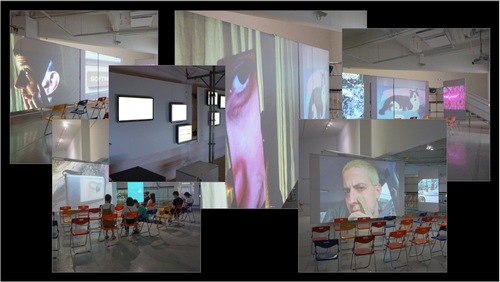
Platform of Future-Past, fabric | ch, 2022
The practice of using networks, data, and algorithms led the artists to develop a systematic approach to combining digital information with physical elements according to certain rules. Furthermore, such practices brought the artists to the exhibitions and curation projects. In the context of Entangled Realities, Living with Artificial Intelligence at the House of Electronic Arts (Basel), 2019, fabric | ch developed the work of Atomized (curatorial) Functioning (A(*)F), which was later also exhibited during Art and Science in the Age of Artificial Intelligence at the National Museum of China (Beijing), 2019.
A(*)F is an architectural project based on automated algorithmic principles, to which a machine learning layer can be added as required. It is a software piece that endlessly creates and saves new spatial configurations for a given situation, converges towards a “solution”, in real-time 3d and according to dynamic data and constraints. During the exhibition at HeK, the sensors collected data both from the artworks and the physical environment, including the walls and the lighting. The information collected by the sensors mapped out the space and helped the curators to organize the exhibition flows.

Atomized (curatorial) Functioning, fabric | ch, 2019
As an ending note, Patrick shared with us the ongoing research project between fabric | ch, the Nam June Paik Art Center (Yongin, South Korea), and ECAL / University of Art and Design, Lausanne (HES-SO), on "viewing rooms" and "digital exhibitions". The research is to give access to the collection of the art center in new ways and forms, out of the physical museum and through digital means. In addition to the research project, fabric | ch is also working on a new project about the digital presentation of the past exhibitions at ZKM (Center for Art and Media, Karlsruhe), the exhibition is planned to open at ZKM at the end of the year.
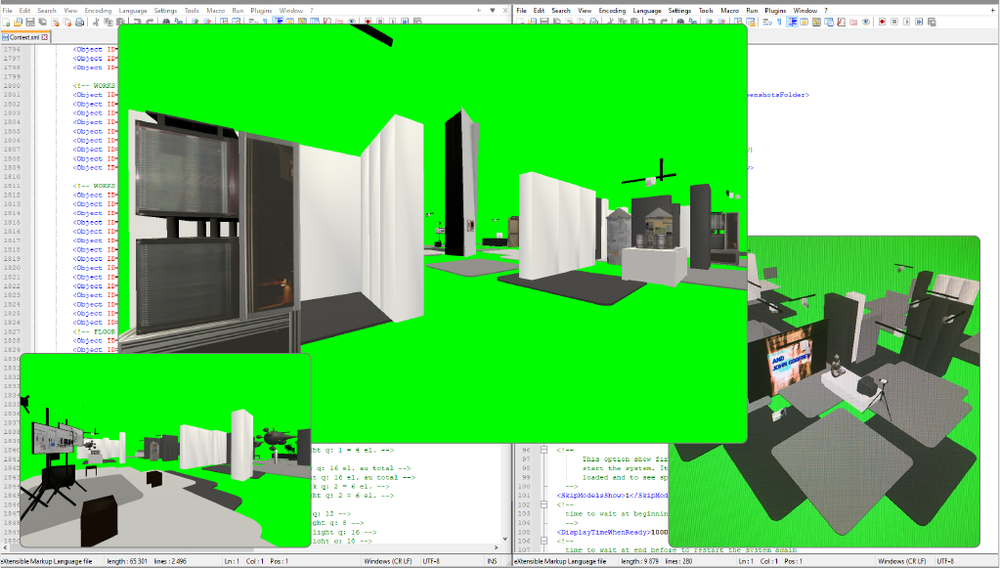
Ongoing project by fabric | ch
The International Conference on AI Art was co-organized by the Aiiiii Art Center and the Art and Artificial Intelligence Lab of Tongji University. With the theme of “AI and Authorship” (2021) and “Artificial Imagination” (2022), the conference combines the most radical of research from a diverse international curation of fields ranging from art, design, computational science, cultural critique as well as political philosophy. This network is established to pioneer and push the boundaries of artificial intelligence and creative production.
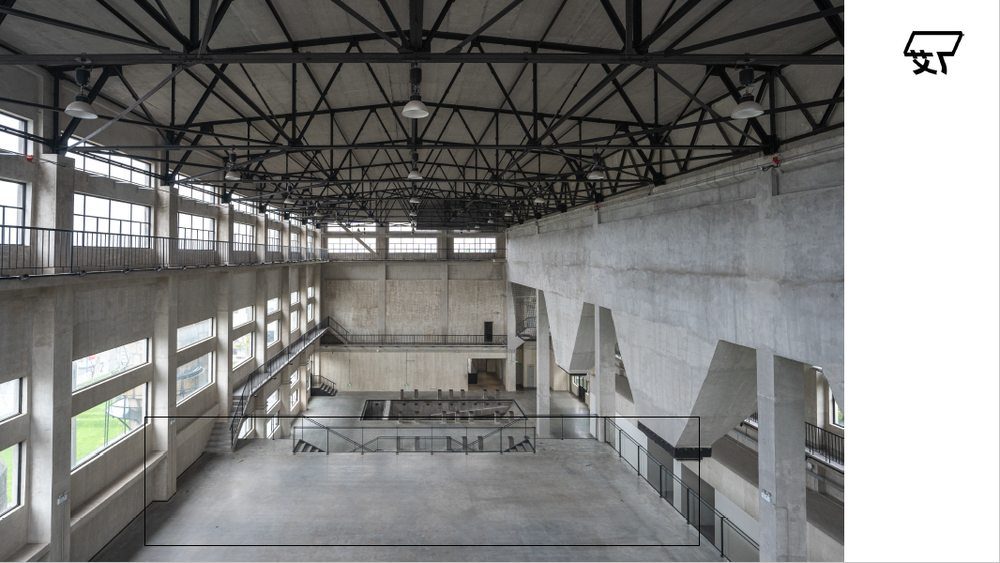
Exhibition space of Aiiiii Art Center
While looking at the exhibition space, two questions came to Xi’s mind: how to physicalize the digital artwork into the space and how to visualize AI art. The two questions lead Xi and her team to the curation concept of the Book of Sand. She chose literature to narrate the exhibition to catch the public attention and tell a good story of AI art. The exhibition starts by employing literary imagination to juxtapose seemingly infinite, random generative art and Borges’ “Book of Sand”, a book that possesses neither a beginning nor an end, just like sand. A book in which “I”, the subject, can turn the pages but cannot predict the outcome, just as we cannot fully comprehend the operational logic of the “black box” embedded by and into a neural network. Against the joy of possessing the book grows the fear that the book is not really infinite, just as we fear that the infinite productivity of AI will make us its captives, as well as the fear that its “infinite creativity” is simply the outcome of intelligent permutations of existing human ideas.

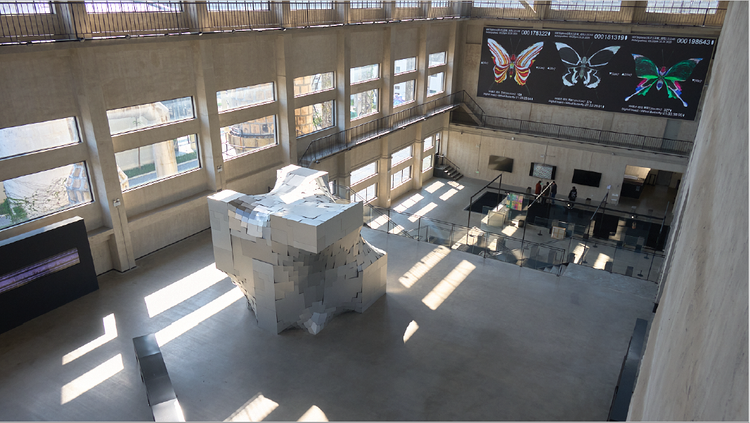
Artificial Remnants, Entangled Others Studio (left) & The Mind Scrap, Certain Measures (right)
“The Book of Sand” is an exhibition done by the joint efforts of machines and humans — the output of the machines interferes with human curatorial and artistic practices. By showcasing the works of Jake Elwes and Dabeiyuzhou, Xi explained further how they worked with the artists to turn web-based artwork into spatial installations.


The ZIZI Show, Jake Elwes (left) & Text Gene Project, Dabeiyuzhou (right)
It is inevitable to talk about what AI art is and who the author is when curating the programs and research projects at Aiiiii Art Center. However, such questions are not at the core of their curatorial practice but to discover the potential of AI itself and deliver the message appropriately to the target audience. With the involvement of machines in the creation and curation process, the question of the role of the machine became a challenging topic. Moreover, it also leads us to think – is there have to be a curator/creator’s name in the exhibition?
Responding to Xi’s question, Patrick pointed out that there are different cases dealing with the question. Taking their own practices, for example, the algorithm is at the core of their work. With the help of AI, the artists could dig deeper into their works, but the concept and the way of working are developed by the collective over years of research and practice. It is important to have their names in the exhibition as they are the creators of the work. Nevertheless, it might be challenging to define the creator for other works using open-source software and text-image software. However, in Patrick’s view, any machine learning program is fed with a huge dataset, without this, the algorithms could not do anything. The things the machines are trained to do and how they are trained to make it essential to define the creator.
Wednesday, March 22. 2023
Matter. Non-Matter. Anti-Matter @ZKM – Webinar on the digital museum | #fabricch
Note: fabric | ch is taking part next week in this webinar about digital museums, organized by ZKM. Participants include members from ZKM Hertz-Lab, Ars Electronica Futurelab, CCCB in Barcelona, Aalto University and Futurium in Berlin.
Via ZKM | Karlsruhe (research project & exhibition: Beyond Matter)
-----
Monday, March 13. 2023
Atomized (re-)Staging short video documentation | #fabricch #digital #hybrid #exhibition
Note: a brief video documentation about one of fabric | ch's latest project – Atomized (Re)Staging – that was exhibited at ZKM during Matter. Non-Matter. Anti-Matter.
The exhibition was curated by Lívía Nolasco-Roszás and Felix Koberstein and took place ibn the context of the European research project Beyond Matter.
![]()
-----
Friday, March 10. 2023
Atomized (re-)Staging at ZKM, Instagram @zkmkarlsruhe (2023) | #fabricch #digital #exhibition #algorithmic #intelligence
Via
-----
Tuesday, January 17. 2023
Pro Helvetia – Visual Arts – Beneath the Skin, Between the Machines (2022) | #exhibition #bestof2022 #review
Note: fabric | ch is thrilled to be part of Pro Helvetia's Shanghai best of 2022! Thanks for this new post and for the support to the exhibition at the HOW Art Museum, as well as it's performances and online lectures program during the pandemic!
We were glad to see that the architectural installation fabric | ch realized in this context remained useful also for remote interaction, exchange of ideas and collaboration.
...
And it's also a way – and still the time – to wish everyone a good start in 2023! With, we hope, many successes, exciting projects and creative statements responding to the challenges of our time.
Via Pro Helvetia (Visual Arts)
-----
Our Best Picks of 2022
For art practitioners or audiences alike, it has not been an easy year. The path of global encounter seemed distant for a while, but has never vanished. Somehow we know, maybe in the most surprising manner, that we will meet each other again halfway. It could be one of these reassuring moments that convinced us of hope when the world is turned upside down: the flipping of bookpages, the smiles from digital rooms, a concert without performers, a recital without playwrights. We are so eager to present what has excited, motivated, or touched us in the past year. Scroll down and discover a diverse selection of projects highlighted under the three overarching themes -- support, connect, and inspire.
Wish you a brilliant start and a Happy New Year 2023!
Pro Helvetia Shanghai



Pro Helvetia Shanghai
Swiss Arts Council
Room 509, Building 1
No.1107, Yuyuan Road, Changning District
Shanghai 200050, China
shanghai@prohelvetia.cn
-----
Beneath the Skin, Between the Machines

Exhibition overview
---
---
“Man is only man at the surface. Remove the skin, dissect, and immediately you come to machinery.” When Paul Valéry wrote this down, he might not foresee that human beings – a biological organism – would indeed be incorporated into machinery at such a profound level in a highly informationized and computerized time and space. In a sense, it is just as what Marx predicted: a conscious connection of machine[1]. Today, machine is no longer confined to any material form; instead, it presents itself in the forms of data, coding and algorithm – virtually everything that is “operable”, “calculable” and “thinkable”. Ever since the idea of cyborg emerges, the man-machine relation has always been intertwined with our imagination, vision and fear of the past, present and future.
In a sense, machine represents a projection of human beings. We human beings transfer ideas of slavery and freedom to other beings, namely a machine that could replace human beings as technical entities or tools. Opposite (and similar, in a sense,) to the “embodiment” of machine, organic beings such as human beings are hurrying to move towards “disembodiment”. Everything pertinent to our body and behavior can be captured and calculated as data. In the meantime, the social system that human beings have created never stops absorbing new technologies. During the process of trial and error, the difference and fortuity accompanying the “new” are taken in and internalized by the system. “Every accident, every impulse, every error is productive (of the social system),”[2] and hence is predictable and calculable. Within such a system, differences tend to be obfuscated and erased, but meanwhile due to highly professional complexities embedded in different disciplines/fields, genuine interdisciplinary communication is becoming increasingly difficult, if not impossible.
As a result, technologies today are highly centralized, homogenized, sophisticated and commonized. They penetrate deeply into our skin, but beyond knowing, sensing and thinking. On the one hand, the exhibition probes into the reconfiguration of man by technologies through what’s “beneath the skin”; and on the other, encourages people to rethink the position and situation we’re in under this context through what’s “between the machines”. As an art institute located at Shanghai Zhangjiang Hi-Tech Industrial Development Zone, one of the most important hi-tech parks in China, HOW Art Museum intends to carve out an open rather than enclosed field through the exhibition, inviting the public to immerse themselves and ponder upon the questions such as “How people touch machines?”, “What the machines think of us?” and “Where to position art and its practice in the face of the overwhelming presence of technology and the intricate technological reality?” Departing from these issues, the exhibition presents a selection of recent works of Revital Cohen & Tuur Van Balen, Simon Denny, Harun Farocki, Nicolás Lamas, Lynn Hershman Leeson, Lu Yang, Lam Pok Yin, David OReilly, Pakui Hardware, Jon Rafman, Hito Steyerl, Shi Zheng and Geumhyung Jeong. In the meantime, it intends to set up a “panel installation”, specially created by fabric | ch for this exhibition, trying to offer a space and occasion for decentralized observation and participation in the above discussions. Conversations and actions are to be activated as well as captured, observed and archived at the same time.
[1] Karl Marx, “Fragment on Machines”, Foundations of a Critique of Political Economy
[2] Niklas Luhmann, Social Systems
---
fabric | ch, Platform of Future-Past, 2022, Installation view at HOW Art Museum.
Work by fabric | ch
HOW Art Museum has invited Lausanne-based artist group fabric | ch to set up a “panel installation” based on their former project “Public Platform of Future Past” and adapted to the museum space, fostering insightful communication among practitioners from different fields and the audiences.
“Platform of Future-Past” is a temporary environmental device that consists in a twenty meters long walkway, or rather an observation deck, almost archaeological: a platform that overlooks an exhibition space and that, paradoxically, directly links its entrance to its exit. It thus offers the possibility of crossing this space without really entering it and of becoming its observer, as from archaeological observation decks. The platform opens- up contrasting atmospheres and offers affordances or potential uses on the ground.
The peculiarity of the work consists thus in the fact that it generates a dual perception and a potential temporal disruption, which leads to the title of the work, Platform of Future-Past: if the present time of the exhibition space and its visitors is, in fact, the “archeology” to be observed from the platform, and hence a potential “past,” then the present time of the walkway could be understood as a possible “future” viewed from the ground…
“Platform of Future-Past” is equipped in three zones with environmental monitoring devices. The sensors record as much data as possible over time, generated by the continuously changing conditions, presences and uses in the exhibition space. The data is then stored on Platform Future-Past’s servers and replayed in a loop on its computers. It is a “recorded moment”, “frozen” on the data servers, that could potentially replay itself forever or is waiting for someone to reactivate it. A “data center” on the deck, with its set of interfaces and visualizations screens, lets the visitors-observers follow the ongoing process of recording.
The work could be seen as an architectural proposal built on the idea of massive data production from our environment. Every second, our world produces massive amounts of data, stored “forever” in remote data centers, like old gas bubbles trapped in millennial ice.
As such, the project is attempting to introduce doubt about its true nature: would it be possible, in fact, that what is observed from the platform is already a present recorded from the past? A phantom situation? A present regenerated from the data recorded during a scientific experiment that was left abandoned? Or perhaps replayed by the machine itself ? Could it already, in fact, be running on a loop for years?
---
Schedule
Duration: January 15-April 24, 2022
Artists: Revital Cohen & Tuur Van Balen, Simon Denny, fabric | ch, Harun Farocki, Geumhyung Jeong, Nicolás Lamas, Lynn Hershman Leeson, Lu Yang, Lam Pok Yin, David OReilly, Pakui Hardware, Jon Rafman, Hito Steyerl, Shi Zheng
Curator: Fu Liaoliao
Organizer: HOW Art Museum, Shanghai
Lead Sponsor: APENFT Foundation
Swiss participation is supported by Pro Helvetia Shanghai, Swiss Arts Council.
---
[Banner image: fabric | ch, Platform of Future-Past, 2022, Scaffolding, projection screens, sensors, data storage, data flows, plywood panels, textile partitions, Dimensions variable.]
Event I
Beneath the Skin, Between the Machines — Series Panel
Investigating Sensoriums: Beyond Life/Machine Dichotomy

Schedule
Organizers: HOW Art Museum, Pro Helvetia Shanghai, Swiss Arts Council
Date: March 19, 2022
Time : 15:00 -16:30 (CST) / 8:00 – 9:30 (CET)
Host: Iris Long
Guests: Zian Chen, Geocinema (Solveig Qu Suess, Asia Bazdyrieva), Marc R. Dusseiller
Language: Chinese, English (with Chinese translation)
Event on Zoom(500 audience limit)
Link: https://zoom.us/j/92512967837
---
This round of discussion derived from the participating speakers’ responses toward to the title of the exhibition, Beneath the Skin, Between The Machines.
What lies beneath the skin of the earth and between the machines may well be signals among sensors. Geocinema’s study on the One Belt One Road initiative and exploration of a “planetary” notion of cinema relate directly to the above concern. Marc R. Dusseiller as a transdisciplinary scholar draws our attention to the possible pathways that skin/machines may generate for understanding to go beyond life/machine dichotomy. Zian Chen’s recent research attempts to bring the mediatized explorations back to our real living conditions. He will resort to real news events as cases to show why these mediatized explorations are embodied experience.
HOW Art Museum in collaboration with Pro Helvetia Shanghai, Swiss Arts Council, invite Zian Chen (writer and curator), Geocinema (art collective) and Marc R. Dusseiller (transdisciplinary scholar and artist) to have a panel discussion, probing into the topic of Beneath the Skin, Between The Machines from the perspectives of their own practice and experience. The panel will be moderated by curator and writer Iris Long.
* Due to pandemic restrictions, the panel will take place online. Video recording of the panel will be played on Platform of Future-Past (2022), an environmental installation conceived by fabric | ch, studio for architecture, interaction and research, for the exhibition.
---
About the Host
Iris Long
About the Guests
Zian Chen, Geocinema, Marc R. Dusseiller
---
Event II

Schedule
Organizers: HOW Art Museum, Pro Helvetia Shanghai, Swiss Arts Council, Conversazione (CVSZ)
Date: April 16, 2022
Time : 14:00-15:30(CST)/ 7:00 – 8:30 (CET)
Host: Cai Yixuan
Guests:Chloé Delarue, fabric | ch, Pedro Wirz, Chun Shao
Language: Chinese, English (with Chinese translation)
Event on Zoom(500 audience limit)
Link: https://us06web.zoom.us/j/85822263121
---
In the hotbed to breed new forms of life, the notion of “life” and digital intimacy are under constant construction and development.
Unfolding the histories of nature and civilization, what kind of interactions could be perceived from the materials, which we constantly used in past narratives, and the environment? How have these interactive relationships, perceivable yet invisible, been evolving and entwined?
This Saturday from 14:00 to 15:30, HOW Art Museum in collaboration with Pro Helvetia Shanghai, Swiss Arts Council and Conversazione, research-based art and design collective based in China, invite Chloé Delarue, whose ongoing body of work centers on the notion of TAFAA – Towards A Fully Automated Appearance; fabric | ch, studio for architecture and research who present an environmental installation at HOW Art Museum where discussions and events could take place; Pedro Wirz whose practice seeks to merge the supernatural with scientific realities; and Shao Chun whose new media artistic practice is dedicated to combing traditional handicrafts and electronic programming to have a panel discussion.
The event intends to probe into the topics covered in Beneath the Skin, Between The Machines and participants will share with audience their insights to materials and media from the perspectives of their own practices. The panel will be moderated by curator Cai Yixuan.
---
About the Host
Cai Yixuan
About the Guests
Chloé Delarue, fabric | ch, Pedro Wirz, Chun Shao
---
Event III
Beneath the Skin, Between the Machines — Online Performance
Holding it together*: myself and the other by Jessica Huber

Schedule
Artist: Jessica Huber, in collaboration with the performers Géraldine Chollet & Robert Steijn, video by Michelle Ettlin
Date: May 31, 2022, 21:00-June 4, 24:00, 2022
Organizer: HOW Art Museum
Performance Support: Pro Helvetia Shanghai, Swiss Arts Council
Technical Support: Centre for Experimental Film (CEF)
Online Screening: Link
---
*Due to COVID-related prevention measures, this projection of the performance will take place online via CEF.
Performance projection will be played when the museum can reopen on Platform of Future-Past (2022), an environmental installation conceived by fabric | ch, studio for architecture, interaction and research, for the exhibition.
HOW Art Museum (Shanghai) will also be temporarily closed during this period.
---
About the artist
Jessica Huber works as an artist in the field of the performing arts and is also together with Karin Arnold a founding member of mercimax, a performance collective based in Zürich.
After finishing her dance studies in London, she danced for various dance companies and most of her early pieces have been dance pieces too. Though her recent work and the forms and formats she chooses, have become more diverse during the past few years. Recently she has been collaborating with the British artist and activist James Leadbitter aka the vacuum cleaner on the hope & fear project.
Jessica works with curiosity and has a special interest in the texture of relationships and in how we function as individuals and as communities in society. She regularly gives workshops to professionals and non-professionals (different social groups) and teaches as a guest tutor at the Hyperwerk in Basel (Institut for studies for Post Industrial Design – or as they call it “the place where we think about how we want to live together in the future”) and is one of two artists who are part of the newly founded dramaturgy pool of Tanzhaus Zürich. She deeply enjoys diversity and is fascinated by the many possible aesthetics of exchange and sharing.
---
About the performance

Picture in the dark: Fletcher/Huber, picture daytime: Ettlin/Huber *pictures from “holding it together”: Nelly Rodriguez
Holding it together*: myself and the other is first of all an encounter between the two performers Géraldine Chollet and Robert Steijn – and the underlying questions of what binds us together and how we create intimacy, playfulness and trust by sharing rituals and treatments with each other.
Two very different and differently old bodies nestle together, doing silent rituals of gentle intimacy. They explain, apparently quite privately, how they met at a party and worked with each other – one with, one without a plan – and what this resulted in. The Dutch performer with a penchant for Shamanism and the dancer from Lausanne offer each other a song, a dance and neither shy away from deep feelings…
“Holding it together” is a series of collaborations, performances and researches Jessica Huber created in collaboration with different artists. The first idea for ‘Holding it together’ sparked during her studio residency in Berlin in 2013. This led to a collection of ideas, approaches to movement and formats under the thematic umbrella: ‘Holding it together’. Four thematic chapters or acts stem from this period: – The Thing; The Mass; Myself; Myself & the other(s).
“Holding it together” is not only a reference to the series’ overarching theme of cooperation and the question of how we perceive and create our world, but also an announcement of the working method: At the core of this series were reflections about the aesthetics and praxis of exchange and sharing, about rituals, as well as the longing for space and time for encounter.
Wednesday, November 30. 2022
Past exhibitions as Digital Experiences @ZKM, fabric | ch | #digital #exhibition #experimentation
Note:
The exhibition related to the project and European research Beyond Matter - Past Exhibitions as Digital Experiences will open next week at ZKM, with the digital versions (or should I rather say "versioning"?) of two past and renowned exhibitions: Iconoclash, at ZKM in 2002 (with Bruno Latour among the multiple curators) and Les Immateriaux, at Beaubourg in 1985 (in this case with Jean-François Lyotard, not so long after the release of his Postmodern Condition). An unusual combination from two different times and perspectives.
The title of the exhibition will be Matter. Non-Matter. Anti-Matter, with an amazing contemporary and historic lineup of works and artists, as well as documentation material from both past shows.
Working with digitized variants of iconic artworks from these past exhibitions (digitization work under the supervision of Matthias Heckel), fabric | ch has been invited by Livia Nolasco-Roszas, ZKM curator and head of the research, to present its own digital take in the form of a combination on these two historic shows, and by using the digital models produced by their research team and made available.

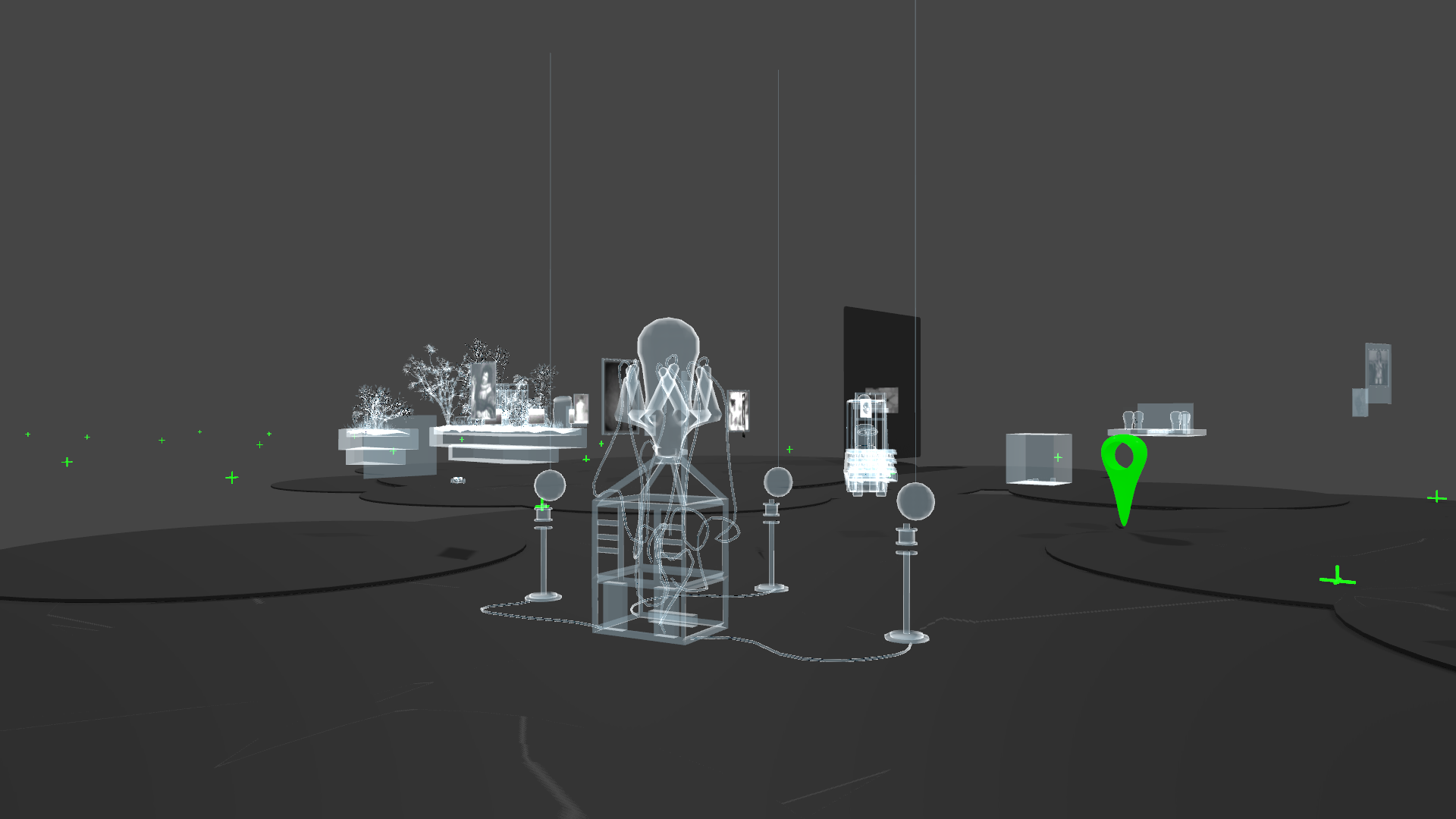
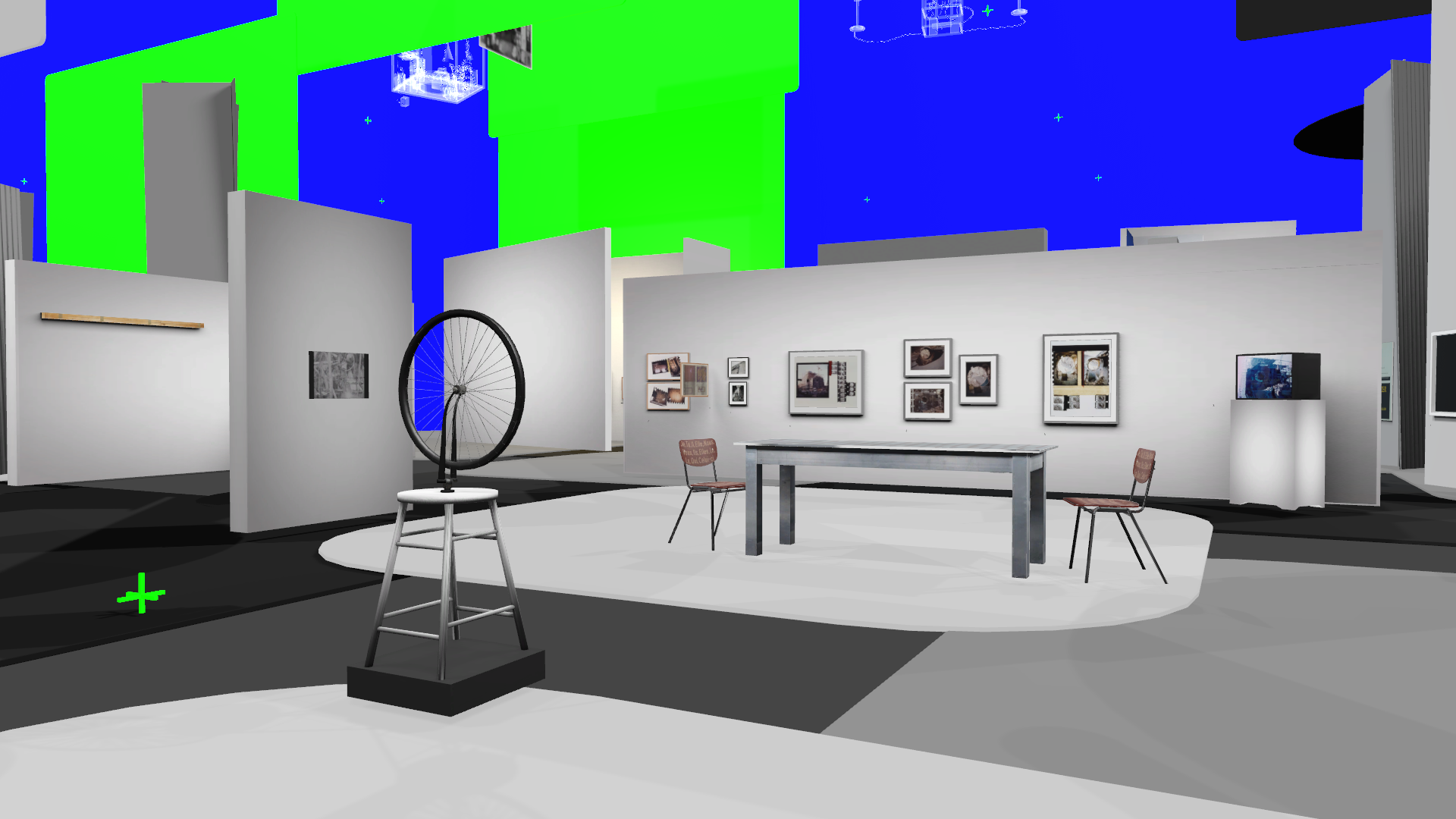
The result, a new fabric | ch project entitled Atomized (re-)Staging, will be presented at the ZKM in Karlsruhe from this Saturday on (03.12.2022 - 23.04.2023).
Via ZKM
-----
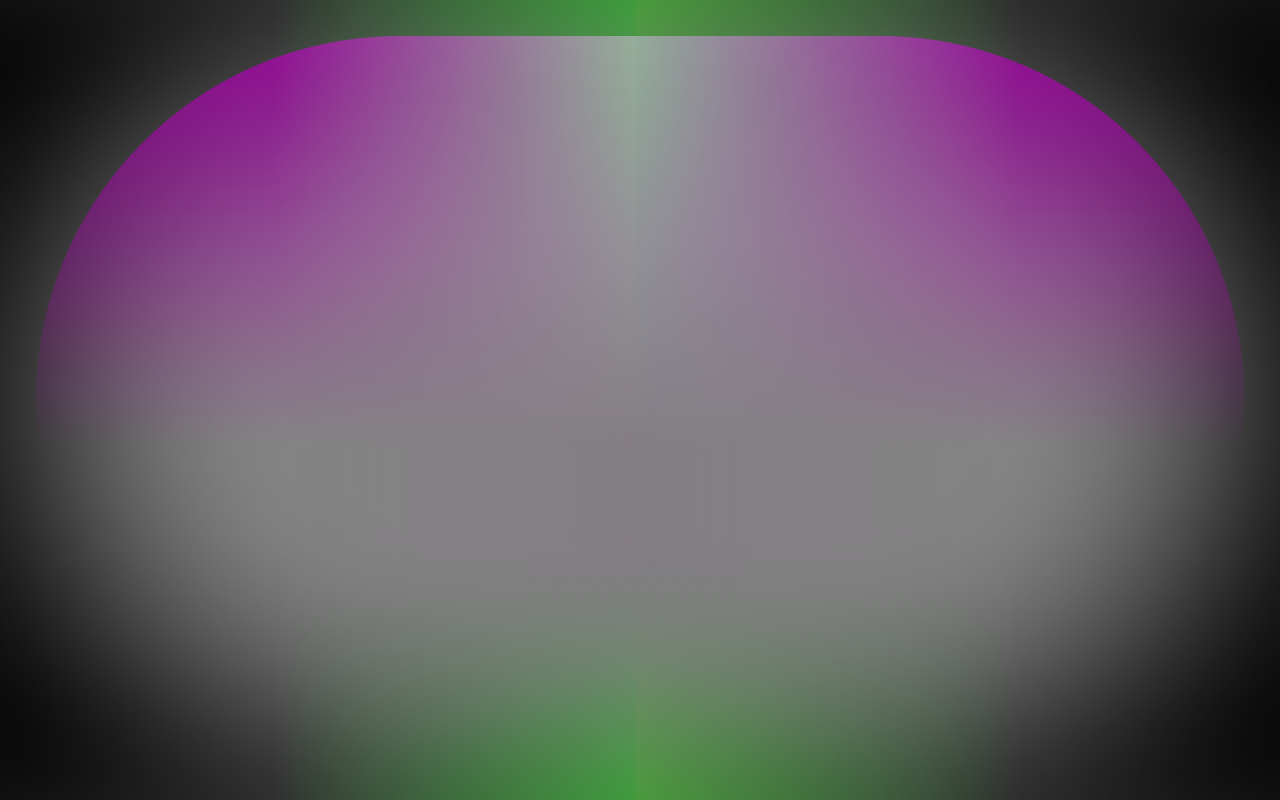
Opening: Matter. Non-Matter. Anti-Matter.
© ZKM | Center for Art and Media Karlsruhe, Visual: AKU Collective / Mirjam Reili
Past exhibitions as Digital Experiences
Fri, December 02, 2022 7 pm CET, Opening
---
Free entry
---
When past exhibitions come to life digitally, the past becomes a virtual experience. What this novel experience can look like in concrete terms is shown by the exhibition »Matter. Non-Matter. Anti-Matter«.
As part of the project »Beyond Matter. Cultural Heritage on the Verge of Virtual Reality«, the ZKM | Karlsruhe and the Centre Pompidou, Paris, use the case studies »Les Immatériaux« (Centre Pompidou, 1985) and »Iconoclash« (ZKM | Karlsruhe, 2002) to investigate the possibility of reviving exhibitions through experiential methods of digital and spatial modeling.
The digital model as an interactive presentation of exhibition concepts is a novel approach to exploring exhibition history, curatorial methods, and representation and mediation. The goal is not to create »digital twins«, that is, virtual copies of past assemblages of artifacts and their surrounding architecture, but to provide an independent sensory experience.
On view will be digital models of past exhibitions, artworks and artifacts from those exhibitions, and accompanying contemporary commentary integrated via augmented reality. The exhibition will be accompanied by a conference on virtualizing exhibition histories.
The exhibition will be accompanied by numerous events, such as specialist workshops, webinars, online and offline guided tours, and a conference.
---
Program
7 – 7:30 p.m. Media Theater
Short lectures by
Sybille Krämer, Professor (emer.) at the Free University of Berlin
Siegfried Zielinski, media theorist with a focus on archaeology and variantology of arts and media, curator, author
Moderation: Lívia Nolasco-Rózsás, curator
7:30 – 8:15 p.m. Media Theater
Welcome
Olga Sismanidi, Representative Creative Europe Program of the European Commission (EACEA)
Arne Braun, State Secretary in the Ministry of Science, Research and the Arts of Baden-Württemberg
Frank Mentrup, Lord Mayor of the City of Karlsruhe
Peter Weibel, Director of the ZKM | Karlsruhe
Xavier Rey, Director of the Centre Pompidou, Paris
8:15 – 8:30 p.m. Improvisation on the piano
Hymn Controversy by Bardo Henning
8:30 p.m.
Curator guided tour of the exhibition
---
The exhibition will be open from 8 to 10 p.m.
The mint Café is also looking forward to your visit.
---
Matter. Non-Matter. Anti-Matter.
Past Exhibitions as Digital Experiences.
Sat, December 03, 2022 – Sun, April 23, 2023
The EU project »Beyond Matter: Cultural Heritage on the Verge of Virtual Reality« researches ways to reexperience past exhibitions using digital and spatial modeling methods. The exhibition »Matter. Non-Matter. Anti-Matter.« presents the current state of the research project at ZKM | Karlsruhe.
At the core of the event is the digital revival of the iconic exhibitions »Les Immatériaux« of the Centre Pompidou Paris in 1985 and »Iconoclash: Beyond the Image Wars in Science, Religion, and Art« of the ZKM | Karlsruhe in 2002.
Based on the case studies of »Les Immatériaux« (Centre Pompidou, 1985) and »Iconoclash: Beyond the Image Wars in Science, Religion, and Art« (ZKM, 2002), ZKM | Karlsruhe and the Centre Pompidou Paris investigate possibilities of reviving exhibitions through experiential methods of digital and spatial modeling. Central to this is also the question of the particular materiality of the digital.
At the heart of the Paris exhibition »Les Immatériaux« in the mid-1980s was the question of what impact new technologies and materials could have on artistic practice. When philosopher Jean-François Lyotard joined as cocurator, the project's focus eventually shifted to exploring the changes in the postmodern world that were driven by a flood of new technologies.
The exhibition »Iconoclash« at ZKM | Karlsruhe focused on the theme of representation and its multiple forms of expression, as well as the social turbulence it generates. As emphasized by curators Bruno Latour and Peter Weibel, the exhibition was not intended to be iconoclastic in its approach, but rather to present a synopsis of scholarly exhibits, documents, and artworks about iconoclasms – a thought experiment that took the form of an exhibition – a so-called »thought exhibition.«
»Matter. Non-Matter. Anti-Matter.« now presents in the 21st century the digital models of the two projects on the Immaterial Display, hardware that has been specially developed for exploring virtual exhibitions. On view are artworks and artifacts from the past exhibitions, as well as contemporary reflections and artworks created or expanded for this exhibition. These include works by Jeremy Bailey, damjanski, fabric|ch, Geraldine Juárez, Carolyn Kirschner, and Anne Le Troter that echo the 3D models of the two landmark exhibitions. They bear witness to the current digitization trend in the production, collection, and presentation of art.
Case studies and examples of the application of digital curatorial reconstruction techniques that were created as part of the Beyond Matter project complement the presentation.
The exhibition »Matter. Non-Matter. Anti-Matter.« is accompanied by an extensive program of events: A webinar series aimed at museum professionals and cultural practitioners will present examples of work in digital or hybrid museums; two workshops, coorganized with Andreas Broeckmann from Leuphana University Lüneburg, will focus on interdisciplinary curating and methods for researching historical exhibitions; workshops on »Performance-Oriented Design Methods for Audience Studies and Exhibition Evaluation« (PORe) will be held by Lily Díaz-Kommonen and Cvijeta Miljak from Aalto University.
After the exhibition ends at the ZKM, a new edition of »Matter. Non-Matter. Anti-Matter.« will be on view at the Centre Pompidou in Paris from May to July 2023.
>>>
Artists
Josef Albers, Giovanni Anselmo, Arman, Art & Language, Jeremy Bailey, Fiona Banner, DiMoDa featuring Banz & Bowinkel, Christiane Paul, Tamiko Thiel, Ricardo Miranda Zúñiga, Samuel Bianchini, Bio Design Lab (HfG Karlsruhe), Jean-Louis Boissier & Liliane Terrier, John Cage, Jacques-Élie Chabert & Camille Philibert, damjanski, Annet Dekker & Marialaura Ghidini & Gaia Tedone, Marcel Duchamp, fabric | ch, Eric J. Heller, Prof. Dr. Kai-Uwe Hemken (Art Studies Kunsthochschule Kassel / University of Kassel), Joasia Krysa, Leonardo Impett, Eva Cetinić, MetaObjects, Sui, Michel Jaffrennou, Geraldine Juárez, Martin Kippenberger, Carolyn Kirschner, Maria Klonaris & Katerina Thomadaki, Joseph Kosuth, Denis Laborde, Mark Lewis & Laura Mulvey, Kasimir Malevich, Pietro Manzoni, Gordon Matta-Clark, Peo Olsson, Katarina Sjögren, Jonas Williamsson, Roman Opalka, Nam June Paik, Readymades belong to everyone®, Jeffrey Shaw, Annegret Soltau, Daniel Soutif & Paule Zajderman, Klaus Staeck, Anne Le Troter, Manfred Wolff-Plottegg, Erwin Wurm
-
Curator
Livia Nolasco-RózsásCuratorial team
Felix Koberstein (ZKM)
Moritz Konrad (ZKM)
Marcella Lista (Centre Pompidou, Paris)
Philippe Bettinelli (Centre Pompidou, Paris)
Julie Champion (Centre Pompidou, Paris)Beyond Matter project team at ZKM
Marianne Schädler (managing editor)
Aurora Bertolli (communication)Exhibition team
Matthias Gommel (Scenography)
Janine Burger (Participation)
Thomas Schwab (Technical project management)Graphic design
AKU.coMuseum and Exhibition Technology
Martin Mangold - Organization / Institution
- Initiated by the ZKM | Center for Art and Media Karlsruhe and the Centre Pompidou, Paris, in collaboration with the Aalto University, Espoo, the Tallinn Art Hall, and the Tirana Art Lab.
>>>
Further locations and dates:
| Mar 14, 2022 – Mar 29, 2022 | Väre, Aalto University, Espoo |
| Apr 20, 2022 – Apr 25, 2022 | The Cube / Helsinki Central Library Oodi |
| Apr 25, 2022 – May 5, 2022 | Väre, Aalto University, Espoo |
| May 16, 2022 – May 22, 2022 | Design Museum Helsinki |
| June 25, 2022 – August 28, 2022 | Tirana Art Lab, Albanien |
| Dec 3, 2022 – Apr 23, 2023 | ZKM |
| Summer 2023 | Centre Pompidou, Paris |
---
Project
Cooperation partners
Supported by
Atomized (re-)Staging, new work by fabric | ch on @beyondmatter and @zkm | #exhibition #digital #autonomous
Via
-----
Friday, November 25. 2022
Matter. Non-Matter. Anti-Matter Exhibition @ZKM | #digital #exhibition #iconoclash #immateriaux #zkm #beaubourg
Note:
An upcoming exhibition for fabric | ch, which will open next week at the ZKM in Karlsruhe.
We'll present a new work in this context (Atomized (re-)Staging), about which we'll hopefully find time to post some documentation on this blog later.
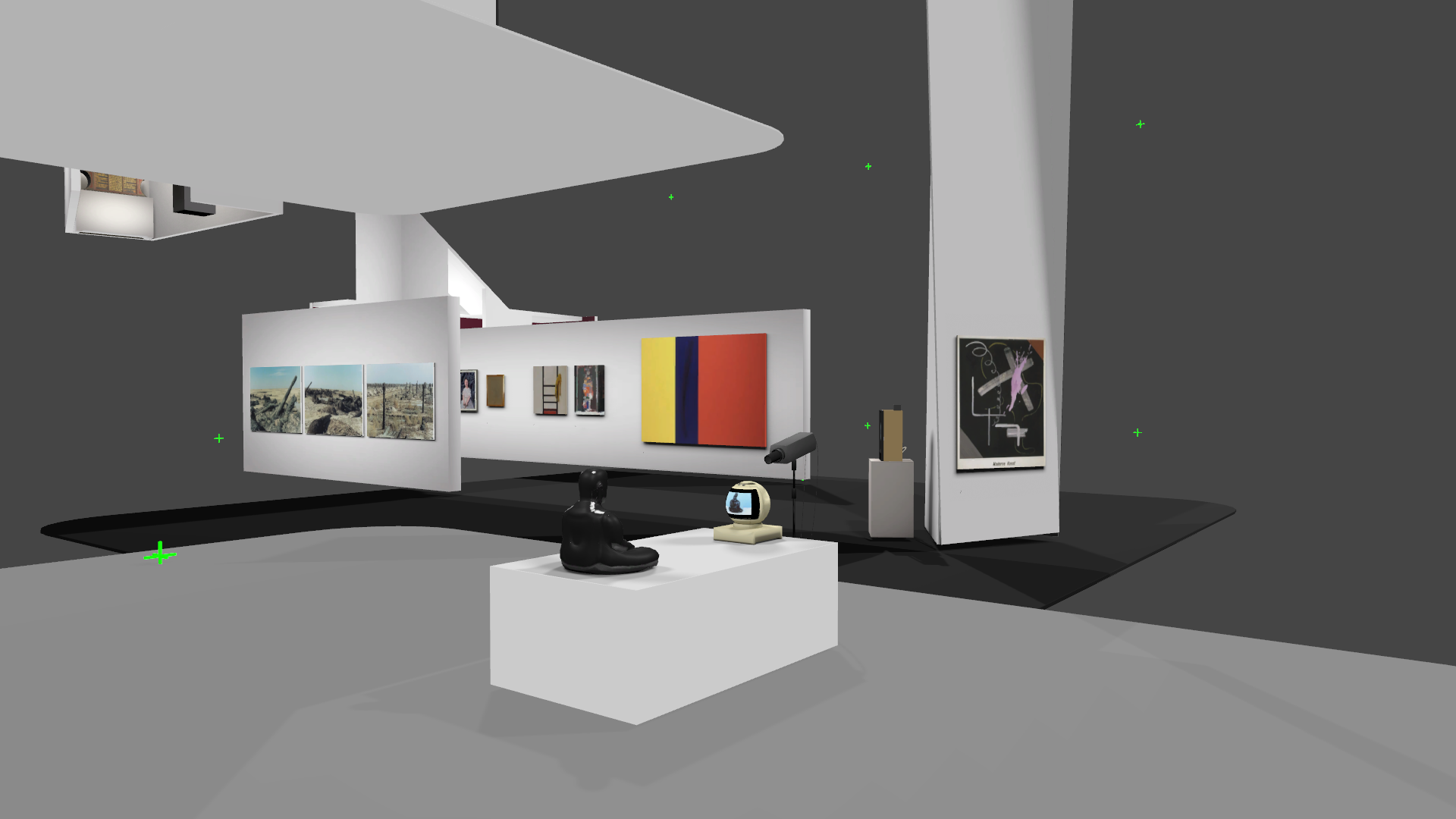
Via @beyondmatter
---
Matter. Non-Matter. Anti-Matter delves into the significance of digitality and computer-generated environments in the context of the material understanding of art production and the showcasing of it.
The exhibition presents the digital models of Les Immatériaux (Centre Pompidou, 1985) and Iconoclash. Beyond the Image Wars in Science, Religion, and Art (ZKM, 2002) on the newly developed Immaterial Display.
Furthermore, a selection of artworks and artifacts, mainly from the collections of the @centrepompidou and @zkmkarlsruhe, attest to a conceptual dematerialization and digital re-materialization of artworks.
---
Via @ptrckkllr
Friday, October 28. 2022
Art x Science Dialogues: Curation In The Context of Artificial Intelligence - fabric | ch & Aiiiii Art Center Shanghai | #AI #exhibition #architecture
Note:
fabric | ch had the pleasure to present our recent works at the invitation of Swissnex China, during an online panel along with Ms. Xi Li, curator and director of the Aiiiii Art Center in Shanghai.
This was in particular the occasion to introduce Platform of Future-Past, a new installation and environmental device realized for the exhibition at How Art Center (Shanghai)
The panel was moderated by Cissy Sun, Head of Art-Science, Swissnex in China.
Via Swissnex China
-----
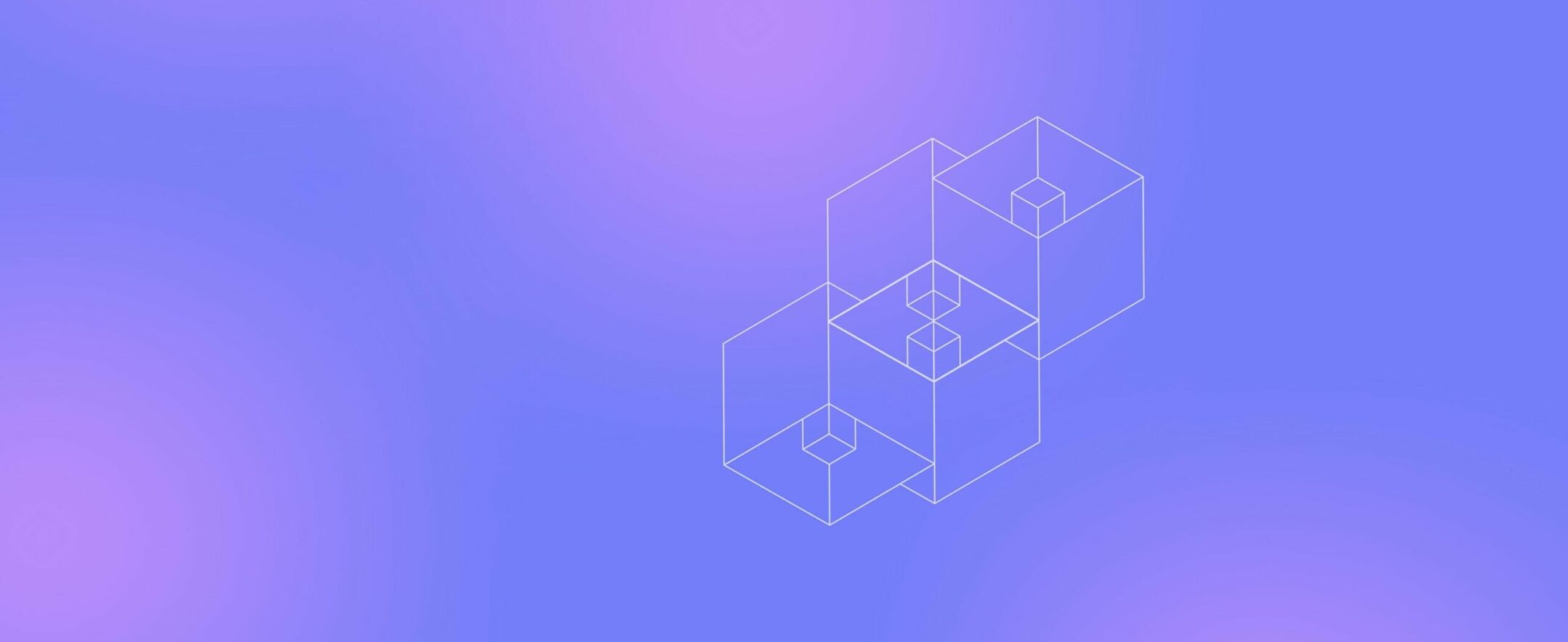
Art x Science Dialogues: Curation In The Context of Artificial Intelligence
Join the upcoming Art x Science Dialogue, exploring the topic of curation and artificial intelligence with Mr. Patrick Keller, Architect and Co-founder of fabric | ch and Ms. Xi Li, Curator and Director of Aiiiii Art Center.
---
When
Where
While the question of whether AI will take over the art world has been raised repeatedly, there seems to be a consensus in the art world that AI is a creative tool and that we should make better use of it. And it is the same with curation. Using algorithms in content curation and spatial design, implementing AI systems in museums, curating on generative artworks and etc. are the new issues facing today’s curators.
In the upcoming edition of Art x Science Dialogue, we’ll invite Mr. Patrick Keller, Architect and Co-founder of fabric | ch, and Ms. Xi Li, Curator and Director of Aiiiii Art Center, to join the conversation on the topic of curation and artificial intelligence.
Patrick Keller will present the works from their Collective – fabric | ch, featuring Atomized (curatorial) Functioning. It is an architectural project based on automated algorithmic principles, to which a machine learning layer can be added as required. It is a software piece that endlessly creates and saves new spatial configurations for a given situation and converges towards a “solution”, in real-time 3d and according to dynamic data and constraints. While Xi Li will present her research on AI art curation and her perspectives and practices in curating the exhibitions at Aiiiii Art Center. It is a brand new artificial intelligence art institution based in Shanghai, aiming to offer insight into the many challenges, practices, and creative modes of artificial intelligence-based art.
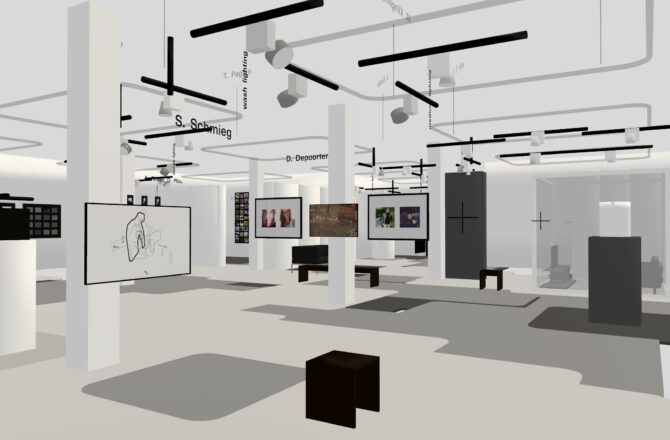
Atomized (curatorial) Functioning, by fabric | ch
---
PROGRAM
16:00 – 16:05 Opening Remarks
Cissy Sun, Head of Art-Science, Swissnex in China
16:05 – 16:25 Presentation
Patrick Keller, Architect, Co-founder, fabric | ch
16:25 – 16:45 Presentation
Xi Li, Curator, Director, Aiiiii Art Center
16:45 – 17:00 Discussion and Q&A
SPEAKERS
---
fabric | ch – studio for architecture, interaction & research
Combining experimentation, exhibition, and production, fabric | ch formulates new architectural proposals and produces singular livable spaces that bind localized and distributed landscapes, algorithmic behaviors, atmospheres, and technologies.
Since the foundation of the studio, the architects and scientists of fabric | ch have investigated the field of contemporary space in its interaction with technologies. From network-related environments that blend physical and digital properties to algorithmic recombination of locations, temporalities, and dimensions based on the objective sensing of their environmental data, it is the nature of our relationship to the environment and to contemporary space that is rephrased.
The work of fabric | ch deals with issues related to the mediation of our relationship to place and distance, to automated climatic, informational, and energetic exchanges, to mobility and post-globalization, all inscribed in a perspective of creolization, spatial interbreeding, new materialism, and sustainability.
fabric | ch is currently composed of Christian Babski, Stéphane Carion, Christophe Guignard and Patrick Keller (cofounders of the collective), Keumok Kim and Michaël Chablais.
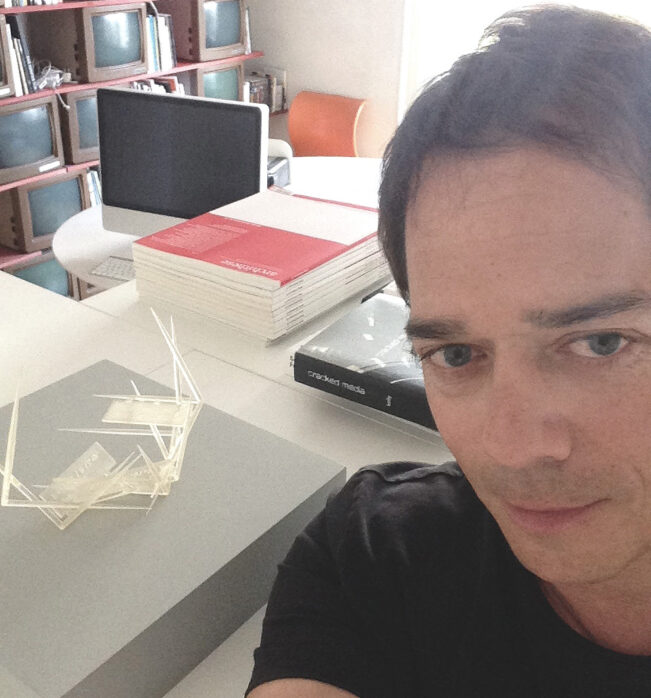
Patrick Keller is an architect and founding member of the collective fabric | ch, composed of architects, artists, and engineers, based in Lausanne, Switzerland.
In this context, he has contributed to the creation, development, and exhibition of numerous experimental works dealing with the intersection of architecture, networks, algorithms, and data, along with livable environments.
---
Aiiiii Art Center
Aiiiii Art Center (Est. 2021) is an artificial intelligence art institution based in Shanghai. The organization seeks to support, promote, as well as incubate both international and domestic artists and projects related to intelligent algorithms. Aiiiii Art Center is committed to becoming a pioneer of artificial intelligence through the discovery of exciting possibilities afforded by the intersections of creativity and technology.
Aiiiii Art Center aims to offer insight into the many challenges, practices, and creative modes of artificial intelligence-based art. Such aims will be achieved through academic conferences and published research efforts conducted either independently or in collaboration with domestic and international institutions and organizations. This organization will also actively promote and showcase the exploratory uses of artificial intelligence-based art in practice.
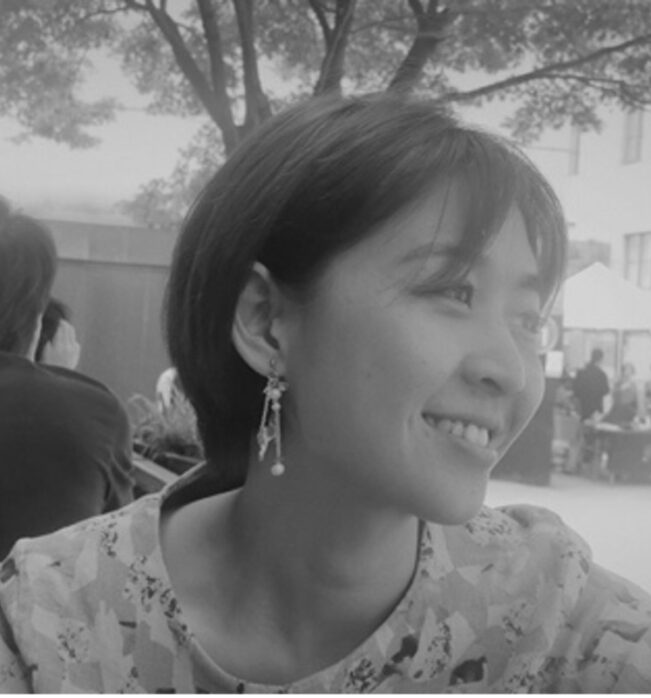
Xi Li, curator, director of Aiiiii Art Center. Graduated from Central Saint Martins MA in Narrative Environments and Central Academy of Fine Arts with a BA in Art Management.
Programs: Book of Sand: The Inaugural Exhibition of Aiiiii Art Center (2021); aai International Conference on AI Art (2021, 2022); Ritual of Signs and Metamorphosis (2018); Olafur Eliasson: The Unspeakable Openness of Things (2017);Captive of Love: Danwen Xing (2017); Over Time: The Poetic Image of the Urbanscape (2016).
---
ART X SCIENCE DIALOGUES
Art x Science Dialogues is a new webinar series initiated by Swissnex in China in 2020. The webinar series not only presents artistic projects where scientists and research engineers are deeply involved but also looks into new interdisciplinary initiatives and trends. Through the dialogues between artists and scientists, we try to stimulate the exchange of ideas between the two different worlds and explore opportunities for collaboration.
fabric | rblg
This blog is the survey website of fabric | ch - studio for architecture, interaction and research.
We curate and reblog articles, researches, writings, exhibitions and projects that we notice and find interesting during our everyday practice and readings.
Most articles concern the intertwined fields of architecture, territory, art, interaction design, thinking and science. From time to time, we also publish documentation about our own work and research, immersed among these related resources and inspirations.
This website is used by fabric | ch as archive, references and resources. It is shared with all those interested in the same topics as we are, in the hope that they will also find valuable references and content in it.
Quicksearch
Categories
Calendar
|
|
July '25 | |||||
| Mon | Tue | Wed | Thu | Fri | Sat | Sun |
| 1 | 2 | 3 | 4 | 5 | 6 | |
| 7 | 8 | 9 | 10 | 11 | 12 | 13 |
| 14 | 15 | 16 | 17 | 18 | 19 | 20 |
| 21 | 22 | 23 | 24 | 25 | 26 | 27 |
| 28 | 29 | 30 | 31 | |||




















